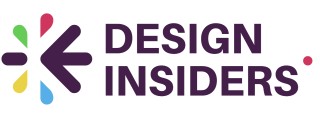
Understanding the Role of Performance Reviews in Design
Performance Reviews as a Catalyst for Growth
Performance reviews are often perceived as formalities in the design world, yet their potential as powerful tools for positive transformation is immense. They transcend their reputational boundaries when woven into the fabric of design management. For design professionals, these reviews are not merely about assessing job performance; they are stepping stones for pushing creative boundaries and achieving new milestones in professional development. The need for a structured evaluation process cannot be overstated. In design, where creativity meets functionality, reviews and evaluations help align team goals with business objectives, fostering an environment ripe for innovation. When effectively designed, these reviews serve as a bridge between employee performance and organizational success, knitting together personal aspirations with corporate visions. The review process extends beyond traditional evaluation forms, maturing into a holistic platform for professional dialog and feedback among managers and team members. Transparent evaluation frameworks encourage an open culture, incentivizing employees to self-assess and recognize areas of improvement. Furthermore, reliable review templates offer managers the instruments necessary to provide concrete feedback, catalyzing both personal and collective growth. Moreover, when applied accurately, these performance evaluation techniques are a boon, sharpening focus on specific design skills and creative objectives. By incorporating performance metrics that reflect creative goals, managers can create an environment that emphasizes skill enhancement, urging employees towards continuous improvement. Exploring best practices in crafting these reviews ensures that employees' aspirations and organizational objectives are symbiotically connected, nurturing a dynamic yet stable ecosystem. Performance reviews in design are not just administrative tasks—they are opportunities for sculpting refined expertise and advancing shared goals. Engaging employees in this review process promotes a community-oriented approach that champions growth, innovation, and continuous improvement. For further insights into enhancing user interaction, explore our discussion on mastering engagement in design here.Key Elements of a Design-Focused Performance Review Template
Identifying Essential Components in Performance Review Frameworks
Developing a robust evaluation process for design professionals requires attention to various key elements. A well-structured review template is essential as it offers the necessary framework to capture the intricacies of an employee's creative contributions and progress in their performance over time.
Customizing Templates for Enhanced Evaluation
An effective performance review template needs to be tailored to suit the specific needs of the team and the individual goals of employees. Standard templates available in Microsoft Word can often be a good starting point, but for maximizing relevance and efficacy, customization is crucial. The focus should be on employee performance-related components, such as goal setting, skill development, creativity, and project outcomes.
Utilizing Clear Metrics and Objective Data
Incorporating clear metrics is vital as they help reduce subjectivity during the evaluation. Objective, quantifiable data facilitates a more uniform assessment of the work done. Elements like project deliverables, adherence to timelines, and innovation metrics provide concrete insight into the employee’s job performance.
For effective design evaluations, managers must employ a framework that reflects both creative and business aims. Recognizing areas of improvement along with strengths offers a balanced view of an individual's contributions. Regular feedback cycles integrated into the reviewing process provide team members with a pathway for continuous improvement. For more nuanced understanding, exploring the role of a user experience consultant can be instrumental.
Aligning Performance Metrics with Creative Objectives
Connecting Creative Goals with Measurable Outcomes
In the realm of design, aligning performance metrics with creative objectives is crucial to fostering meaningful evaluations. It is a task that demands both precision and flexibility, given that creativity often refuses to adhere to rigid guidelines. However, with the right approach, it is possible to evaluate design work effectively without stifling creativity. Consider employing clear and easily adjustable performance metrics to suit creative goals. Performance reviews must account for the diverse nature of design work, where several factors can influence outcomes. Here are some strategies to help:- Define Specific Creative Goals: Start by understanding the expected outcomes of a design project. Determine what success looks like and set benchmarks that help measure attainment of those goals. Document these in a performance evaluation template, ensuring clarity for both managers and employees.
- Establish Measurable Criteria: Although creativity can be subjective, certain aspects of a designer's work, like deadline adherence and client feedback, can be measured. Work closely with your team members to identify these measurable areas and include them in the employee evaluation forms.
- Implement Customizable Templates: Use customizable performance review templates tailor-made to align with different design disciplines. Templates should be flexible, adapting to mid-year changes in objectives or project scope, thus aiding in a more accurate review process.
- Integrate Feedback for Personal Development: Incorporate continuous feedback loops so that employee performance can evolve over time. Regular feedback helps employees understand the areas improvement needed and promotes professional development.
Addressing Subjectivity in Design Evaluations
Overcoming Subjectivity in Design Evaluations
Navigating the waters of design evaluations can often feel challenging due to the inherently subjective nature of the field. However, it's crucial for both managers and employees to recognize that subjectivity doesn't have to be a stumbling block. Instead, it can be effectively managed to ensure a fair and comprehensive review process. First and foremost, developing a robust evaluation template can serve as a foundation to minimize bias. This involves creating consistent templates that emphasize clear, objective criteria whenever possible. Leveraging performance metrics aligned with creative objectives, as discussed earlier, can also guide this process by providing tangible benchmarks tied to employee goals. In addition to the use of standardized templates, fostering open communication between managers and team members can significantly aid in addressing subjectivity. Encouraging a culture of ongoing feedback and dialogue can help clarify expectations and demystify the evaluation process. Ongoing discussions allow employees to better understand how their performance stacks up against established team objectives, and provide managers with a clearer perspective on an individual's job performance. Moreover, incorporating multiple review templates and evaluation forms can provide a comprehensive view of an employee's work. Such diversity in inputs can offset individual biases, contributing to a more balanced performance review. Employee evaluations are more insightful when they combine self-reviews with feedback from peers and supervisors. Performance management systems, particularly those that integrate a feedback loop, can further enhance this process by continuously identifying areas of improvement. This allows both parties to track development throughout the year rather than relying solely on annual or mid-year reviews. Finally, it's important to remember the role of empathy in evaluations. While templates and metrics are pivotal, understanding each team member's unique contribution to the creative process is equally important. Encouraging employees to provide personal insights during evaluations fosters an inclusive environment where employees feel valued and motivated to strive for ongoing improvement.Incorporating Feedback Loops for Continuous Improvement
Creating a Pathway for Regular Insights
To boost performance within a design team, integrating continuous feedback mechanisms is key. The process of ongoing performance evaluation allows for timely improvement and real-time development, setting the stage for both employee and organizational growth. Although traditional performance reviews tend to be conducted annually, inserting a mid-year review or engaging in regular feedback sessions can be more beneficial.
For managers, providing constructive insights allows employees to adjust their job performance in alignment with team goals and objectives. This review process not only helps in identifying areas for improvement but also encourages a more collaborative work environment where team members feel valued and heard.
Using evaluation templates or standardized employee evaluation forms can aid in maintaining consistency across the reviews. These templates, whether crafted in Microsoft Word or other digital tools, serve as a framework for discussion, ensuring that all critical points are covered systematically. The review template acts as a guide for both employees and managers to pinpoint successes and discuss areas where further coaching may be required.
To facilitate a culture of continuous improvement, it's essential for managers to organize feedback sessions that are not only scheduled regularly but are also integrated into the daily work processes. This regular communication helps to align personal ambitions with the creative performance goals of the organization, fostering a more dynamic and responsive team.














